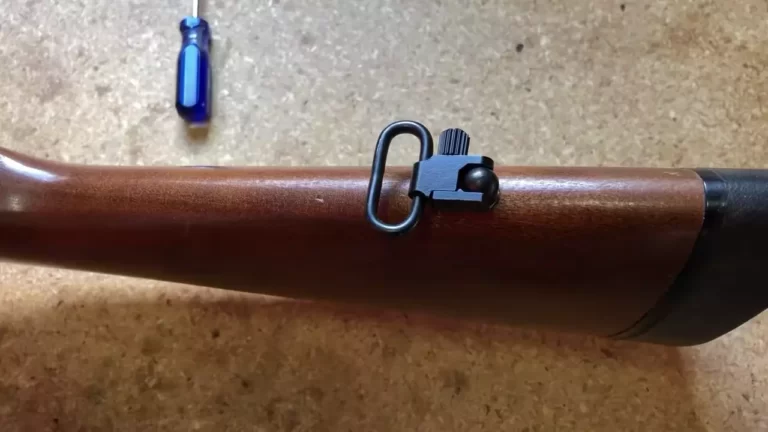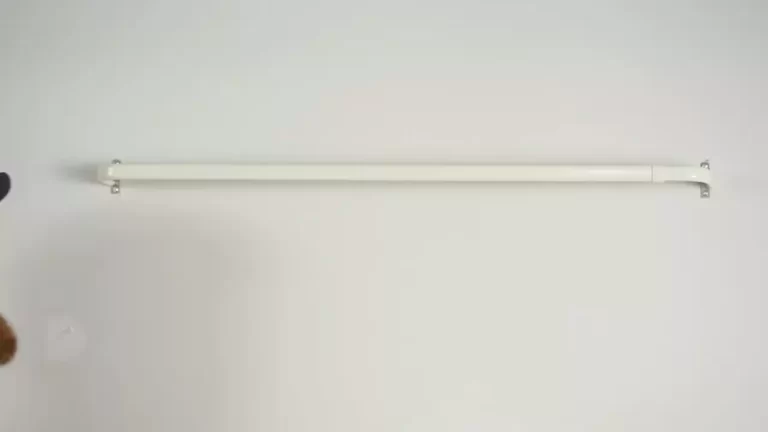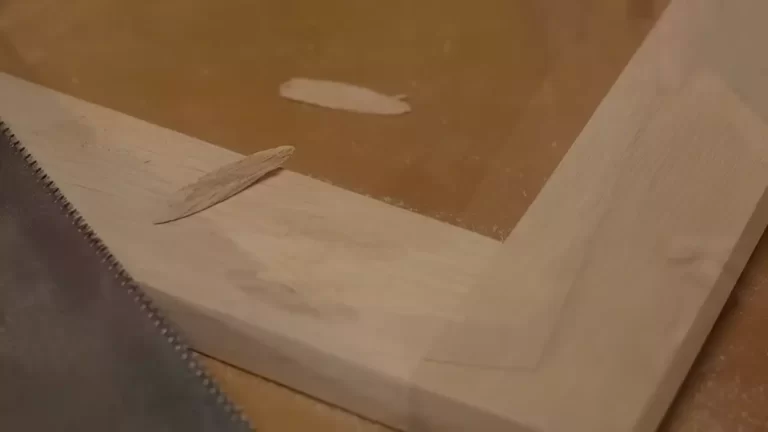How to Install Tapcon Screws?
To install Tapcon screws, first, drill pilot holes into the concrete using a hammer drill and a masonry bit. Then, simply insert the Tapcon screws into the pilot holes and tighten them using a screwdriver or an impact driver.
When you need to securely attach materials to concrete surfaces, Tapcon screws are an excellent choice. These screws are specifically designed for concrete and provide reliable strength and durability. To ensure a proper installation, it is important to follow a few simple steps.
In this guide, we will walk you through the process of installing Tapcon screws, from drilling pilot holes to securely fastening materials to concrete. By following these steps, you can confidently complete your project and achieve a strong, long-lasting connection. So, let’s get started on the installation process!
Gathering The Necessary Tools And Materials
Before you start installing Tapcon screws, it is important to gather all the necessary tools and materials. This will ensure that you have everything you need to complete the job smoothly and efficiently. Here are the essential items you will need:
Safety Goggles
Protecting your eyes is of utmost importance when working with power tools and masonry materials. Safety goggles should be worn throughout the entire installation process to prevent any potential eye injuries from dust or debris. Make sure to choose goggles that fit snugly and have clear lenses for maximum visibility.

Dust Mask
Inhaling dust particles can be harmful to your respiratory system, especially when working with concrete or masonry. Wearing a dust mask will help filter out the dust and protect your lungs. Look for a mask that provides a secure and comfortable fit, and ensure it meets the relevant safety standards for effective filtration.
Hammer Drill
A hammer drill is a crucial tool for drilling into concrete or masonry surfaces. It combines rotary drilling motion with a hammering action, allowing you to penetrate tough materials effectively. Make sure your hammer drill is in good working condition and has the necessary power to handle the task at hand. If you don’t own a hammer drill, you can consider renting one from a local hardware store.
Masonry Drill Bit
To create the necessary holes for your Tapcon screws, you will need a masonry drill bit. These specialized bits are designed to withstand the hardness of concrete and masonry, ensuring clean and precise holes. Choose a drill bit size that matches the diameter of your Tapcon screws, usually specified in the product instructions or packaging.
Tapcon Screws
The star of the show, Tapcon screws are specifically designed for fastening objects to concrete and masonry surfaces. These screws are made of durable materials, such as stainless steel, and feature a unique thread design that provides strong and secure anchoring. Ensure you have the correct size and length of Tapcon screws for your project, depending on the thickness of the materials you are attaching.
Tape Measure
Accurate measurements are essential for precise and successful Tapcon screw installation. A tape measure allows you to determine the desired location and ensure proper alignment of your fasteners. Choose a reliable tape measure with clear markings and an appropriate length for your specific project.
Pencil
A pencil may seem like a small and insignificant tool, but it plays a vital role in marking the drilling points on your concrete or masonry surface. Use a pencil to make clear and visible marks, ensuring you drill your holes in the correct spots for optimal fastener placement.
With these tools and materials gathered, you are now ready to move on to the next steps of installing Tapcon screws. Stay tuned for our upcoming blog posts, where we will guide you through the entire installation process, from preparing the surface to securing your materials securely.
Preparing The Work Area
When it comes to installing Tapcon screws, one of the most important steps is preparing the work area. By ensuring the work area is clear and free from any obstacles, you can start the installation process smoothly. There are three key aspects to focus on during this stage: checking the wall for any obstacles or utilities, marking the desired locations for the screws, and clearing away any debris or obstructions.
Checking the wall for any obstacles or utilities
Before you begin installing Tapcon screws, it’s crucial to examine the wall for any obstacles or utilities that may interfere with the installation. These can include electrical wires, plumbing pipes, or even studs. This step is essential to avoid damaging any infrastructure and to ensure a secure installation. To check for such obstacles, you can use a stud finder or an electronic cable detector. These tools will help you identify any hidden materials that may affect your drilling.

Marking the desired locations for the screws
Once you’ve confirmed that the wall is clear of any obstacles, the next step is to mark the desired locations for the Tapcon screws. To do this accurately, measure and mark the points on the wall where you want to insert the screws. You can use a pencil or a marker to make these markings. It’s recommended to double-check the accuracy of your measurements to ensure that your installation is precise and aligned according to your requirements.
Clearing away any debris or obstructions
Before drilling holes for the Tapcon screws, it’s important to clear away any debris or obstructions that may hinder the installation process. Ensure the work area is clean and free from any dust, dirt, or loose materials. You can use a brush, a vacuum cleaner, or any other suitable tool to remove these obstructions. By clearing the work area, you’ll create a clean surface, allowing the Tapcon screws to securely fasten into the wall.
Drilling Pilot Holes
Drilling pilot holes is a crucial step in the process of installing Tapcon screws. These small holes serve as guides for the screws, ensuring a secure and accurate installation. In this section, we will explore the various aspects of drilling pilot holes, including choosing the appropriate drill bit size, inserting the drill bit into the hammer drill, setting the correct speed and torque, and positioning the drill bit on the marked locations.
Choosing the Appropriate Drill Bit Size for Tapcon Screws
Before starting the drilling process, it is important to select the right drill bit size for Tapcon screws. Using the wrong size can lead to loose or stripped screws. To determine the correct size, refer to the packaging of the Tapcon screws or consult the manufacturer’s guidelines. It is also recommended to measure the diameter of the screws to ensure an accurate match. Once you have identified the appropriate size, insert the corresponding drill bit into your hammer drill.
Inserting the Drill Bit into the Hammer Drill
When inserting the drill bit into the hammer drill, make sure the tool is turned off and unplugged. Align the shank of the drill bit with the chuck of the hammer drill, ensuring a secure fit. Apply firm pressure and twist the chuck in a clockwise direction to tighten it. Once the drill bit is securely in place, you can move on to the next step.
Setting the Drill to the Correct Speed and Torque
Setting the drill to the correct speed and torque is essential for drilling pilot holes effectively. Most hammer drills have adjustable speed settings that can be adjusted based on the material you are working with. It is advisable to start with a lower speed and gradually increase it as needed. Additionally, the torque setting should be adjusted to match the requirements of the Tapcon screws. Consult the manufacturer’s instructions to determine the appropriate torque setting.
Positioning the Drill Bit on the Marked Locations
Before drilling, mark the locations where the pilot holes will be drilled. These marks will serve as your reference points. Hold the drill with a steady grip and position the drill bit directly on the marked locations. Ensure that the drill is perpendicular to the surface to achieve accurate and straight pilot holes. Maintain a firm grip on the drill and be prepared to exert controlled pressure during the drilling process.
Once the drill bit is in position and you are ready to begin, proceed to the next step of the installation process: drilling pilot holes to the required depth.
Installing Tapcon Screws
Installing Tapcon screws is an essential step in any construction or DIY project that requires secure fastening. These versatile screws are specifically designed for masonry, providing a reliable and durable connection. In this section, we will walk you through the process of installing Tapcon screws, ensuring stability and proper installation.
Inserting the Tapcon screws into the pilot holes
The first step in installing Tapcon screws is to create pilot holes in the masonry surface. This is necessary to ensure proper alignment and prevent any cracking or splitting. To do this, use a hammer drill equipped with a masonry bit that matches the diameter of the Tapcon screw.
Tip: It’s important to choose the appropriate Tapcon screw length based on the thickness of the material you’re fastening. The screw should penetrate the masonry by at least 1 inch to provide sufficient strength and stability.

Turning the screws clockwise manually until they are snug
Once the pilot holes are prepared, it’s time to insert the Tapcon screws. Start by placing the screw in the pilot hole and turning it clockwise manually using a screwdriver. Apply firm, steady pressure to ensure the screw engages with the masonry.
Tip: If you encounter any resistance while turning the screw, it may be an indication that the pilot hole needs to be slightly widened. Carefully adjust the hole size to ensure a proper fit for the Tapcon screw.
Using a drill with a screwdriver bit to fully tighten the screws
After the Tapcon screws are snugly inserted into the pilot holes, the next step is to fully tighten them using a drill. Attach a screwdriver bit that matches the screw head to your drill. Set the drill to the appropriate torque setting and carefully drive the screws clockwise until they are fully tightened.
Tip: Avoid over-tightening the screws, as this can lead to damage or strip the threads. Use a controlled and gradual approach until the screws are snug and secure.
Inspecting the screws for proper installation and stability
Once the Tapcon screws are fully tightened, take a moment to inspect them for proper installation and stability. Ensure that the screw heads are flush with the surface, and there are no gaps or wobbling. Gently try to wiggle each screw to confirm its stability.
Tip: If you identify any issues during the inspection, such as loose screws or insecure connections, it’s crucial to address them immediately. Re-tighten any loose screws or replace them if necessary to maintain the integrity of your project.
Tips And Best Practices For Tapcon Screw Installation
When it comes to installing Tapcon screws, there are several tips and best practices that you should keep in mind to ensure a successful and secure installation. Whether you are a DIY enthusiast or a professional contractor, following these guidelines will help you achieve the desired results. In this article, we will explore some of the key factors that you should consider when installing Tapcon screws, including using a hammer drill with a hammering function, applying consistent and even pressure while drilling pilot holes, removing dust and debris from the holes, avoiding over-tightening the screws, and considering using a power driver with adjustable torque settings for larger projects.
Using a hammer drill with a hammering function for better effectiveness
When it comes to drilling into concrete, using a regular drill might not be sufficient to achieve the desired results. That’s why it is recommended to use a hammer drill with a hammering function. The hammering action of the drill helps to break up the concrete as you drill, making it easier to insert the Tapcon screws. This type of drill provides better effectiveness and ensures a more secure installation.
Applying consistent, even pressure while drilling the pilot holes
When drilling the pilot holes for the Tapcon screws, it is important to apply consistent and even pressure. This helps to ensure that the holes are drilled straight and properly sized for the screws. Applying too much pressure can cause the drill bit to deviate from the desired path, leading to misaligned holes. On the other hand, applying too little pressure might not create a hole that is deep enough for the screws. By maintaining consistent, even pressure, you can achieve accurate results.
Using a vacuum or brush to remove dust and debris from the pilot holes
Before inserting the Tapcon screws into the drilled pilot holes, it is crucial to remove any dust and debris that might have accumulated. This can be done using a vacuum or a brush. Removing the dust and debris ensures proper contact between the screws and the concrete, resulting in a more secure installation. It also prevents any obstructions that could affect the threading of the screws. So, take the time to clean out the pilot holes before proceeding with the installation.
Avoiding over-tightening the screws, which can damage the threads
While it is important to secure the Tapcon screws firmly, it is equally essential to avoid over-tightening them. Over-tightening can cause damage to the threads, making it difficult to remove or loosen the screws in the future. It is recommended to use a torque wrench or a power driver with adjustable torque settings to ensure that the screws are tightened to the appropriate level. This will help to maintain the integrity of the threads and ensure a durable installation.
Considering using a power driver with adjustable torque settings for larger projects
For larger projects that involve installing a significant number of Tapcon screws, using a power driver with adjustable torque settings can be beneficial. This allows you to set the torque based on the specific requirements of the project, ensuring consistent and accurate tightening of the screws. It also reduces the risk of over-tightening and provides more efficiency when working on larger scales. Consider using a power driver with adjustable torque settings to streamline your installation process.

Common Mistakes To Avoid
When it comes to installing Tapcon screws, it is important to be aware of the common mistakes that can occur. Taking the time to properly prepare and execute the installation process can make all the difference in the longevity and effectiveness of the screws securing your materials. Avoiding these common mistakes will help ensure a successful installation.
Using the wrong size or type of drill bit
One of the most common mistakes when installing Tapcon screws is using the wrong size or type of drill bit. Using the correct size drill bit is crucial to create the necessary pilot holes for the screws to fit securely. In addition to size, it’s essential to use a masonry drill bit specifically designed for use with Tapcon screws.
Using the wrong size or type of drill bit can lead to several issues. If the drill bit is too small, the pilot holes may not be large enough to accommodate the screws, resulting in a loose and ineffective connection. On the other hand, if the drill bit is too large, the screws may not have enough grip in the pilot holes, leading to instability and potential failure over time.
Over-tightening the screws, causing them to strip or break
Another mistake to avoid is over-tightening the Tapcon screws. While it may be tempting to tighten them as much as possible for maximum security, doing so can actually cause the screws to strip or break. Tapcon screws are designed to be self-tapping, meaning they create their own threads as they are screwed into the material. Over-tightening can put excessive strain on the screws, causing them to become damaged or break altogether.
To avoid this mistake, it’s important to use a torque setting appropriate for the specific Tapcon screws being used. Refer to the manufacturer’s guidelines or consult a professional if you’re unsure. Tighten the screws just enough to securely fasten the materials without putting unnecessary stress on the screws themselves.
Failing to drill the pilot holes to the proper depth
Drilling the pilot holes to the proper depth is another crucial step often overlooked during Tapcon screw installation. The pilot holes should be drilled to a depth that allows the screws to penetrate the material fully while leaving enough room for a secure grip. Failing to drill the pilot holes to the proper depth can lead to unstable connections and weak fastening.
Refer to the Tapcon screw manufacturer’s guidelines for the recommended pilot hole depth, taking into consideration the length of the screws being used and the thickness of the materials being fastened. Use a depth gauge or mark the drill bit with tape to ensure accurate depth drilling.
Not wearing safety goggles and a dust mask during drilling
While drilling pilot holes for Tapcon screws, it is essential to prioritize safety by wearing appropriate protective gear. Not wearing safety goggles and a dust mask during drilling can expose you to potential eye injuries from flying debris and respiratory issues caused by inhaling dust particles.
Protect your eyes by wearing safety goggles that meet the necessary safety standards. Additionally, wearing a dust mask will help prevent the inhalation of fine particles generated during the drilling process.
Remember, safety should always be a top priority when working with power tools and construction materials.
When To Use Tapcon Screws And Benefits
Tapcon screws are a versatile and reliable fastening solution for a wide range of applications. With their unique design and construction, these screws offer several benefits over traditional fasteners. In this section, we will explore the applications for Tapcon screws, the advantages they provide over other fasteners, and the factors to consider when deciding to use them.
Applications for Tapcon Screws
Tapcon screws are specifically designed for use in concrete, masonry, and other solid base materials. They are commonly used in the construction industry for a variety of applications, including:
- Anchoring metal plates and brackets to concrete or masonry walls
- Securing wood framing to concrete or masonry foundations
- Installing electrical boxes, conduit straps, and light fixtures
- Mounting signs, shelves, and brackets
These are just a few examples of the many applications where Tapcon screws can be used effectively. Their ability to provide strong and secure fastening in solid base materials makes them an ideal choice for various projects.
Advantages of using Tapcon screws over other fasteners
Tapcon screws offer several advantages over other fasteners, making them a popular choice among professionals and DIY enthusiasts alike. Here are some of the key benefits:
- Easy installation: Tapcon screws can be installed without the need for additional anchors or inserts, saving both time and effort. They come with a drill bit, which ensures precise and effortless drilling.
- Excellent holding power: Due to their unique thread design and high-quality materials, Tapcon screws provide exceptional holding power in concrete and masonry. This ensures a secure and durable connection.
- Resistance to corrosion: Tapcon screws are manufactured using corrosion-resistant materials like carbon steel and stainless steel, making them suitable for both indoor and outdoor applications.
- Versatility: With various lengths and diameters available, Tapcon screws can be used in a wide range of applications, providing flexibility and convenience.
- Cost-effectiveness: Tapcon screws offer a cost-effective solution, as they eliminate the need for additional anchors or inserts. Their easy installation and long-lasting performance make them a reliable choice for many projects.
Factors to consider when deciding to use Tapcon screws
Before using Tapcon screws, it is important to consider certain factors to ensure they are the right choice for your project. Here are the key factors to keep in mind:
- Base material: Tapcon screws are designed for use in concrete and masonry. It is crucial to evaluate the base material and ensure it is suitable for Tapcon installation.
- Load requirements: Consider the weight and load that the screws will be subjected to. Tapcon screws have specific load capacities depending on the base material and installation method.
- Drilling depth: Determine the required drilling depth based on the length of the Tapcon screws and the thickness of the base material. It is important to drill to the correct depth for optimal performance.
- Environmental conditions: Consider the exposure of the installation site to different environmental factors, such as moisture, temperature, and chemicals. Select the appropriate Tapcon screws based on their resistance to these conditions.
- Installation technique: Follow the proper installation techniques specified by the manufacturer to ensure optimal performance and durability.
By considering these factors, you can make an informed decision and confidently use Tapcon screws for your specific project.
Frequently Asked Questions For How To Install Tapcon Screws
How Do You Install Tapcon Screws?
To install Tapcon screws, first, drill a hole into the base material using a hammer drill. Then, insert the Tapcon screw into the hole and tighten it using either a wrench or a drill with a socket attachment. Ensure that the screw is fully secured and flush with the surface to ensure proper installation.
What Size Drill Bit Do I Need For Tapcon Screws?
To determine the correct drill bit size for Tapcon screws, match the diameter of the Tapcon screw with the corresponding drill bit size. For example, if you are using a 3/16-inch Tapcon screw, you will need a 5/32-inch drill bit.
It’s important to use the correct drill bit to ensure a snug fit and secure installation.
Can You Install Tapcon Screws In Masonry?
Yes, Tapcon screws are specifically designed for use in masonry materials such as concrete, brick, and stone. They are ideal for applications such as attaching fixtures, electrical boxes, and other items to masonry surfaces. When properly installed, Tapcon screws provide strong and reliable fastening in masonry.
How Deep Should I Drill For Tapcon Screws?
To determine the depth for drilling Tapcon screws, measure the length of the screw, including the threads. Drill the hole to a depth that allows the screw to go fully into the base material, leaving sufficient space for any attached fixture.
Typically, drill the hole 1/4 to 1/2 inch deeper than the length of the screw.
Conclusion
Installing Tapcon screws can be a straightforward process if you follow the right steps. By ensuring that you have the proper tools and materials, prepping the surface correctly, and using the appropriate techniques, you can secure your fixtures and ensure long-lasting durability.
Remember to always consider safety precautions and consult professional advice when needed. With these tips in mind, you’ll be able to tackle your next DIY project with confidence and precision.







